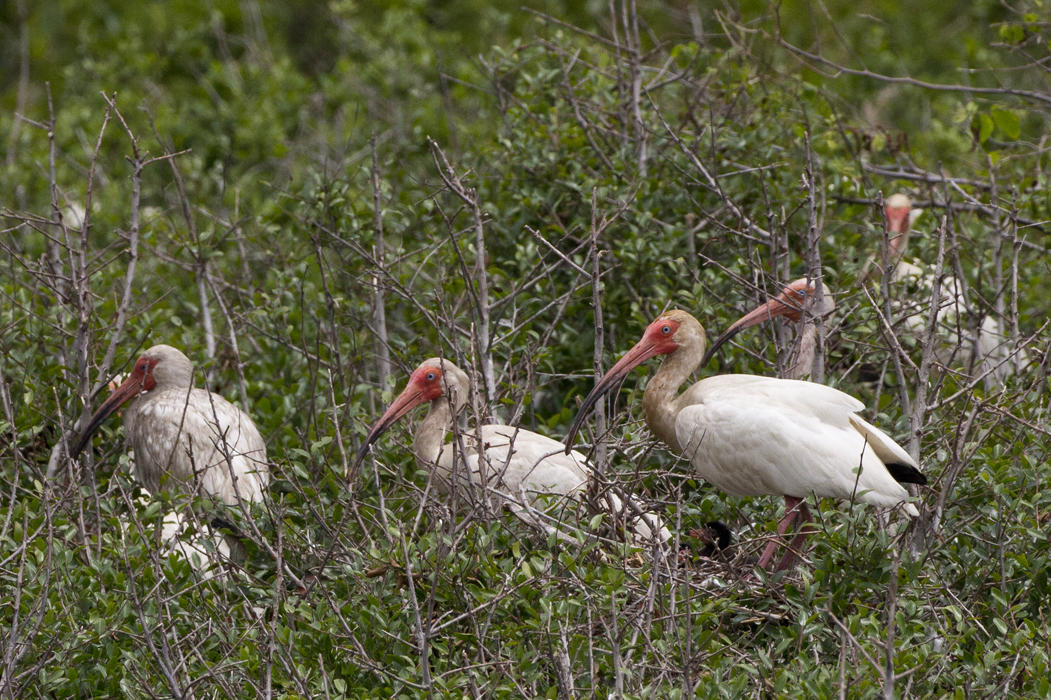The skies above Battery Island in the mouth of the Cape Fear River were once again filled with White Ibis during the 23rd annual Cape Fear Garden Club river cruise, after a large colony of the wading birds mysteriously abandoned the island last year. The ibis have returned this spring to build nests and rear young in the Red Cedars, Yaupon and other shrubs of the island, which is protected and managed by Audubon.
The Cape Fear Garden Club and bird-lovers from across the community got an up-close view of the returning ibis colony in May, when a sold-out crowd of 120 passengers traveled the river on the maiden voyage of the Henrietta. The riverboat chugged downstream from the Wilmington docks, passing a number of islands protected by Audubon for nesting birds.
The Garden Club hosts the cruise each year as a fundraiser for Audubon’s coastal programs, and this year’s trip provided no shortage of bird sightings. With binoculars in hand, people on the cruise spotted diving Brown Pelicans and Royal Terns, which nest on the dredge islands that line the Lower Cape Fear River. Ospreys hovered overhead as Dr. James Parnell, UNC-Wilmington Professor Emeritus, spoke about the history of conservation on the river and the role Audubon has played in protecting key nesting grounds for birds.
The final destination of the cruise was Battery Island, a 100-acre spit of land across from the Southport waterfront. As the Henrietta rocked mid-river, dozens of White Ibis flocks soared overhead. The birds are doting parents and spend their days flying far from their roosts, soaring inland to find freshwater prey for their chicks, which aren’t able to digest salty food until they are five to six weeks old.
In recent years, more than 10,000 nesting pairs of White Ibis have made their spring and summer home on Battery Island, representing approximately 10 percent of North America’s White Ibis population and making the site the largest colony of wading birds in North Carolina. Audubon monitors and protects the island by posting signs asking people to steer clear of the nesting area.
But the ibis pulled a disappearing act last year, when none of the birds nested on the island. Audubon Coastal Biologist Lindsay Addison says no one is quite sure why, but she suspects it could be related to a pair of juvenile Bald Eagles that patrolled the area for much of last spring and summer.

Addison says it’s not unusual for White Ibis to adjust their nesting locations based on pressures in the environment, which can be a useful survival tool. “Ibis are like that,” Addison says. “Call them nomadic. They can respond to a problem by choosing a different nesting site in a different year, but they’ll come back most years, especially when they’re successful.”
Ensuring the birds have a consistent place to breed and nest is critical as development pressures continue to eat away at habitat.
Annie Anthony, a garden club member, remembers visiting Battery Island in 2017 on the club’s annual cruise. That was the last time the ibis were nesting on the island, and Anthony recalls being dazzled by the vast number of ibis roosting in the trees. “The island was covered in itty bitty fur balls,” Anthony said. Those fur balls were ibis chicks. Now that the birds have returned to Battery Island, chicks are beginning to hatch once again.







